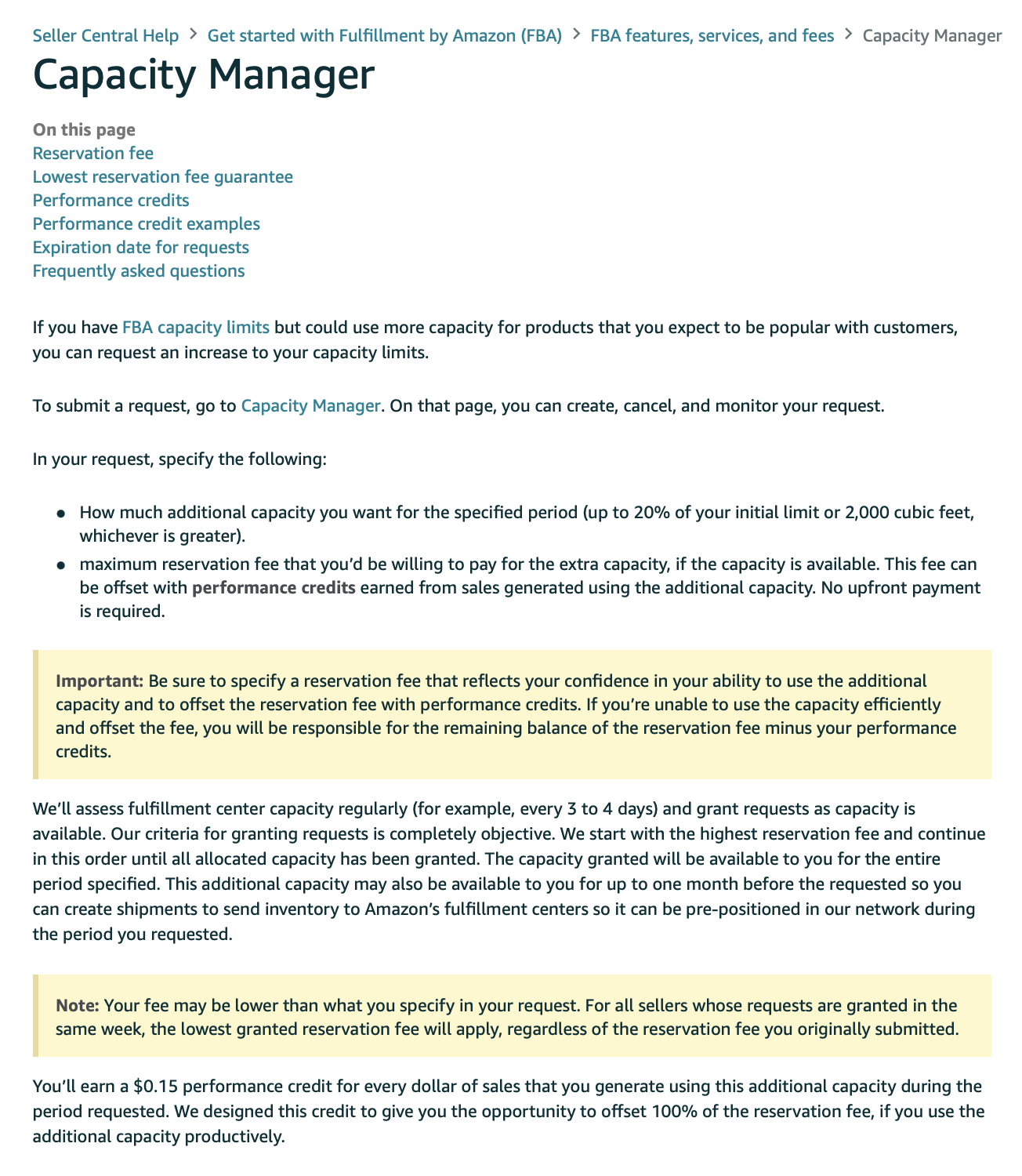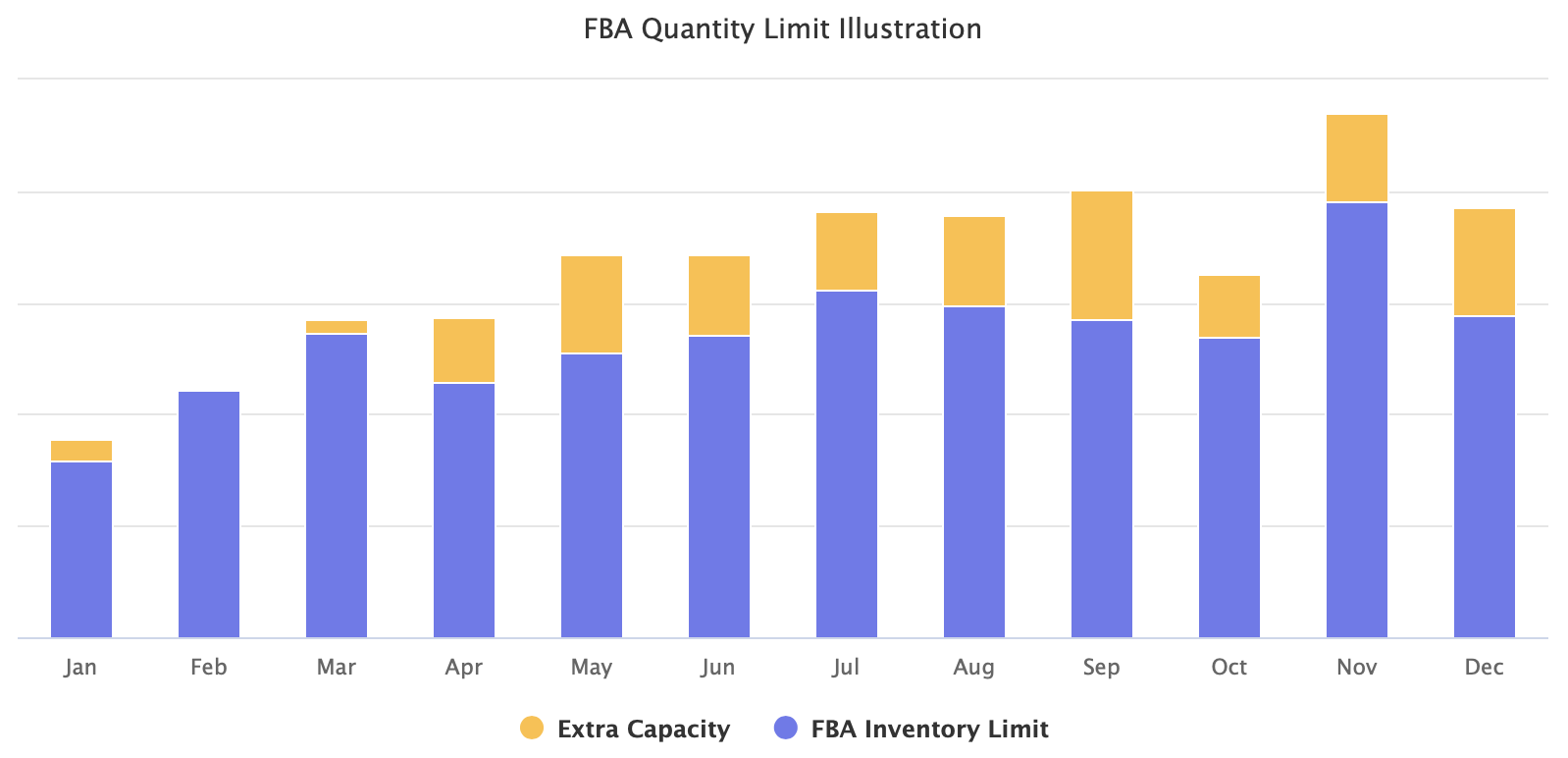Amazon is turning its Fulfillment by Amazon (FBA) service into an auction, where sellers can bid for extra capacity beyond inventory limits set by Amazon. It is launching overhauled capacity limits starting March 1st, 2023.
Amazon periodically assesses sellers’ performance on the marketplace and sets the maximum warehouse space they can use based on IPI score and sales performance. Over the past few years, these limitations have become more erratic and restricting, creating an artificial ceiling on the seller’s revenue. Yet selling on Amazon without FBA is nearly impossible, and thus over 90% of top sellers use it.

Now, Amazon will allow sellers to go beyond the allocated warehouse space by bidding for more. “If you have FBA capacity limits but could use more capacity for products that you expect to be popular with customers, you can request an increase to your capacity limits,” read Amazon’s Capacity Manager help page. “In your request, specify the following: How much additional capacity you want for the specified period (up to 20% of your initial limit or 2,000 cubic feet, whichever is greater) and maximum reservation fee that you’d be willing to pay for the extra capacity.”
For example, if the seller only has 1,000 cubic feet of inventory space allocated, they could decide to bid for an additional 500 cubic feet at $0.10 per cubic foot. Amazon will grant the whole 500 or not grant the request depending on what increases other sellers bid for.
Amazon will allocate extra capacity to sellers with the highest bid first. “Our criteria for granting requests is completely objective. We start with the highest reservation fee and continue in this order until all allocated capacity has been granted. The capacity granted will be available to you for the entire period specified. This additional capacity may also be available to you for up to one month before the requested so you can create shipments to send inventory to Amazon’s fulfillment centers so it can be pre-positioned in our network during the period you requested.”
Nonetheless, sellers could recoup some or all of the fees paid for the extra capacity. “You’ll earn a $0.15 performance credit for every dollar of sales that you generate using this additional capacity during the period requested. We designed this credit to give you the opportunity to offset 100% of the reservation fee, if you use the additional capacity productively.”

Typically, auctions are solutions for supply and demand mismatch. Uber, famously, charges riders more when there aren’t enough drivers on the road. Amazon’s cloud hosting service, AWS, allows users to bid for unused capacity due to low demand and thus pay less. Here, Amazon will charge more because it itself restricts supply by imposing inventory limits. Albeit, Amazon’s spokesperson said that to date, the vast majority of sellers have had their total reservation fee reimbursed.
These changes will allow sellers to get extra space and thus generate more sales when they can forecast better than Amazon’s limits system. The idea is that after paying for the extra space but selling more, Amazon will increase the limit, and the seller will not have to bid for more space next month. However, the bidding process introduces complexity and will likely lead to sellers losing even more margin to fees.

